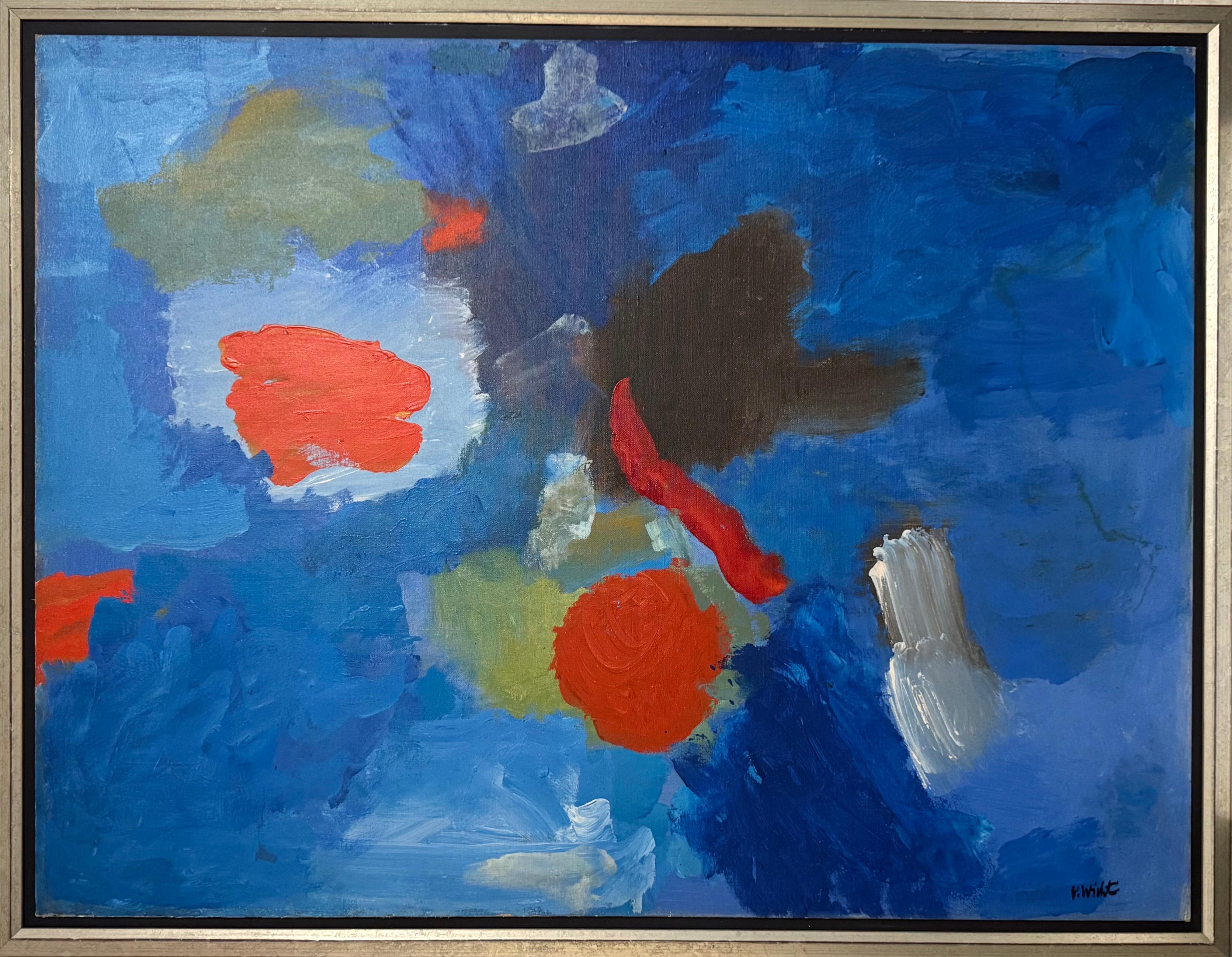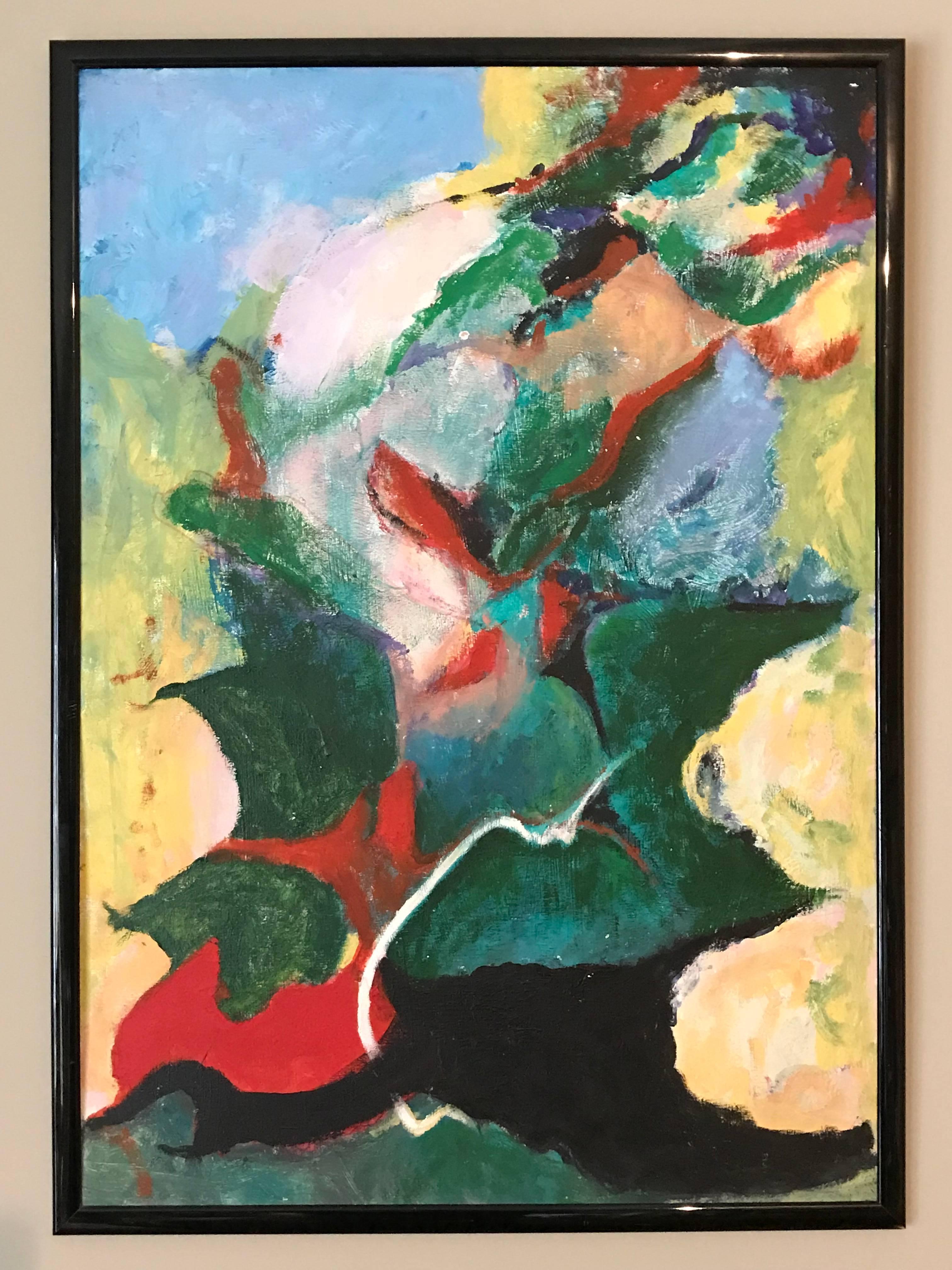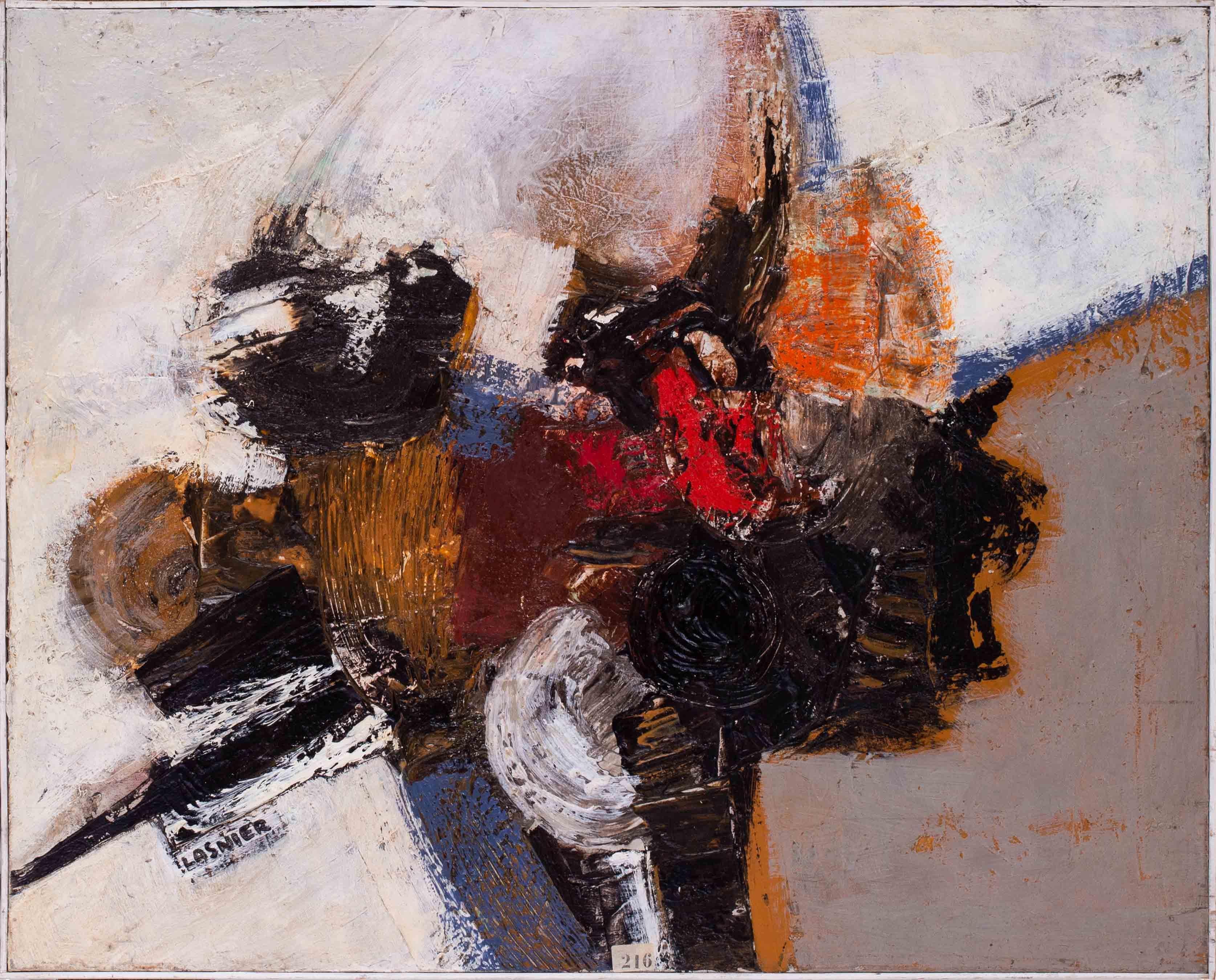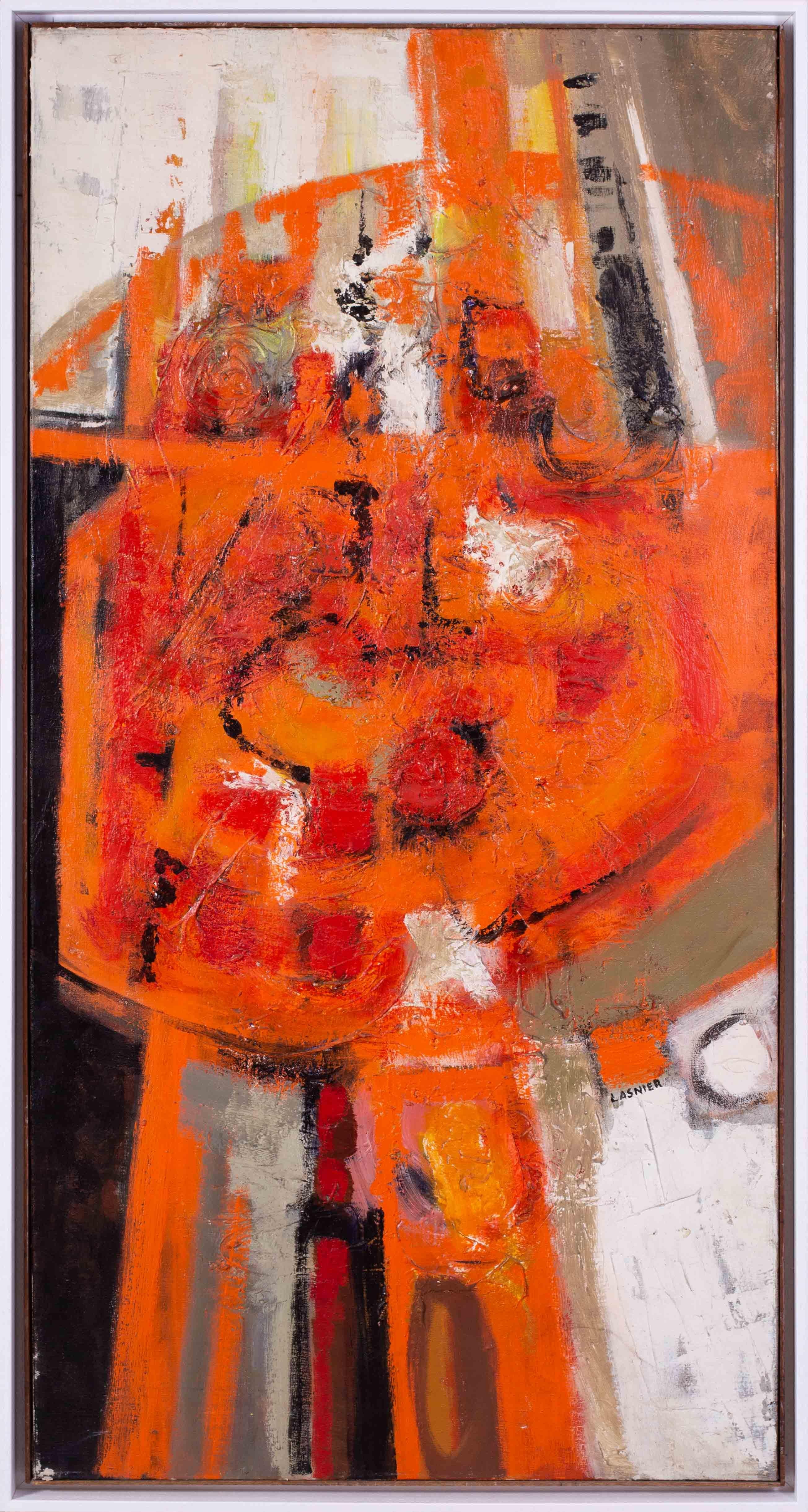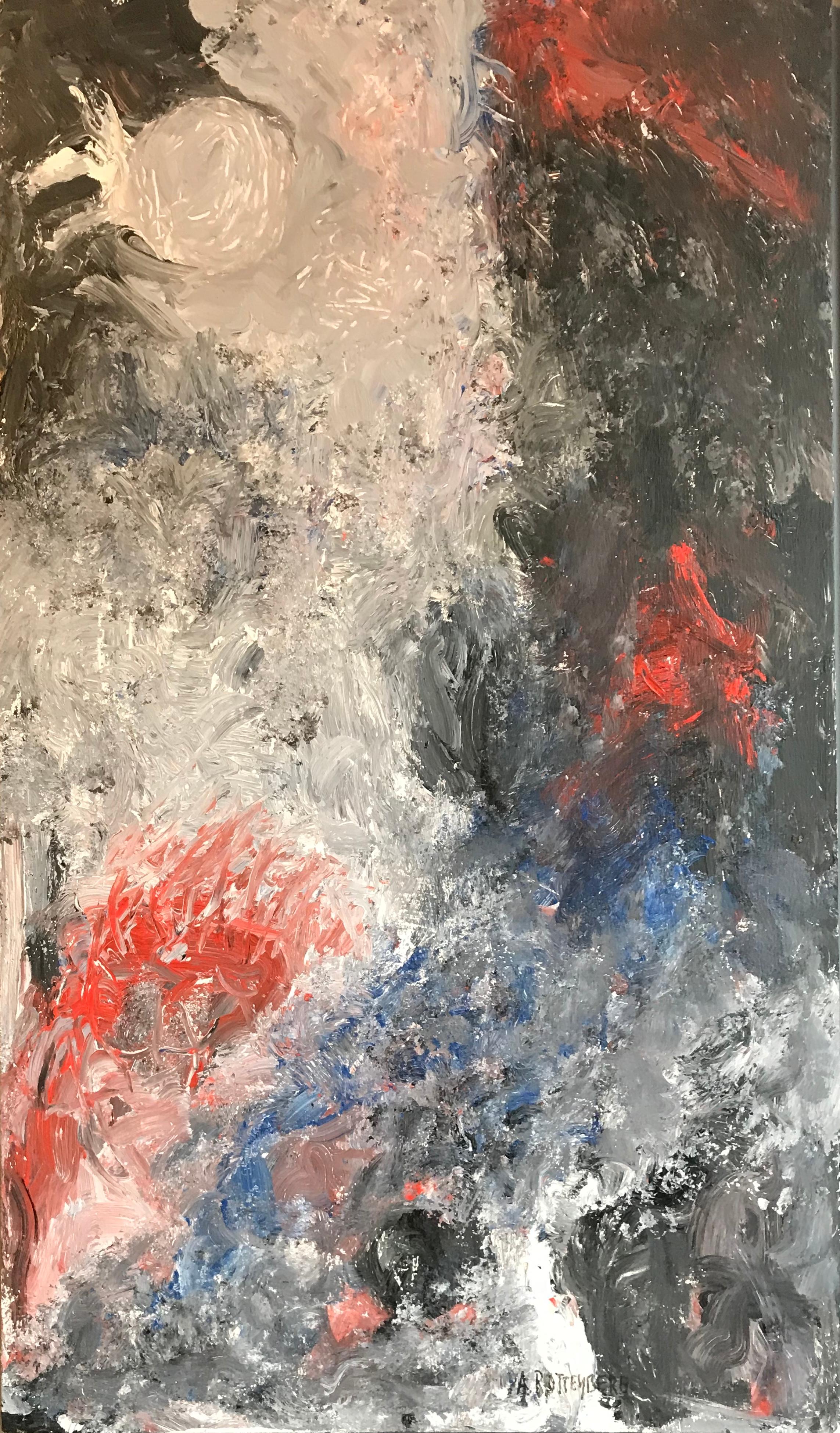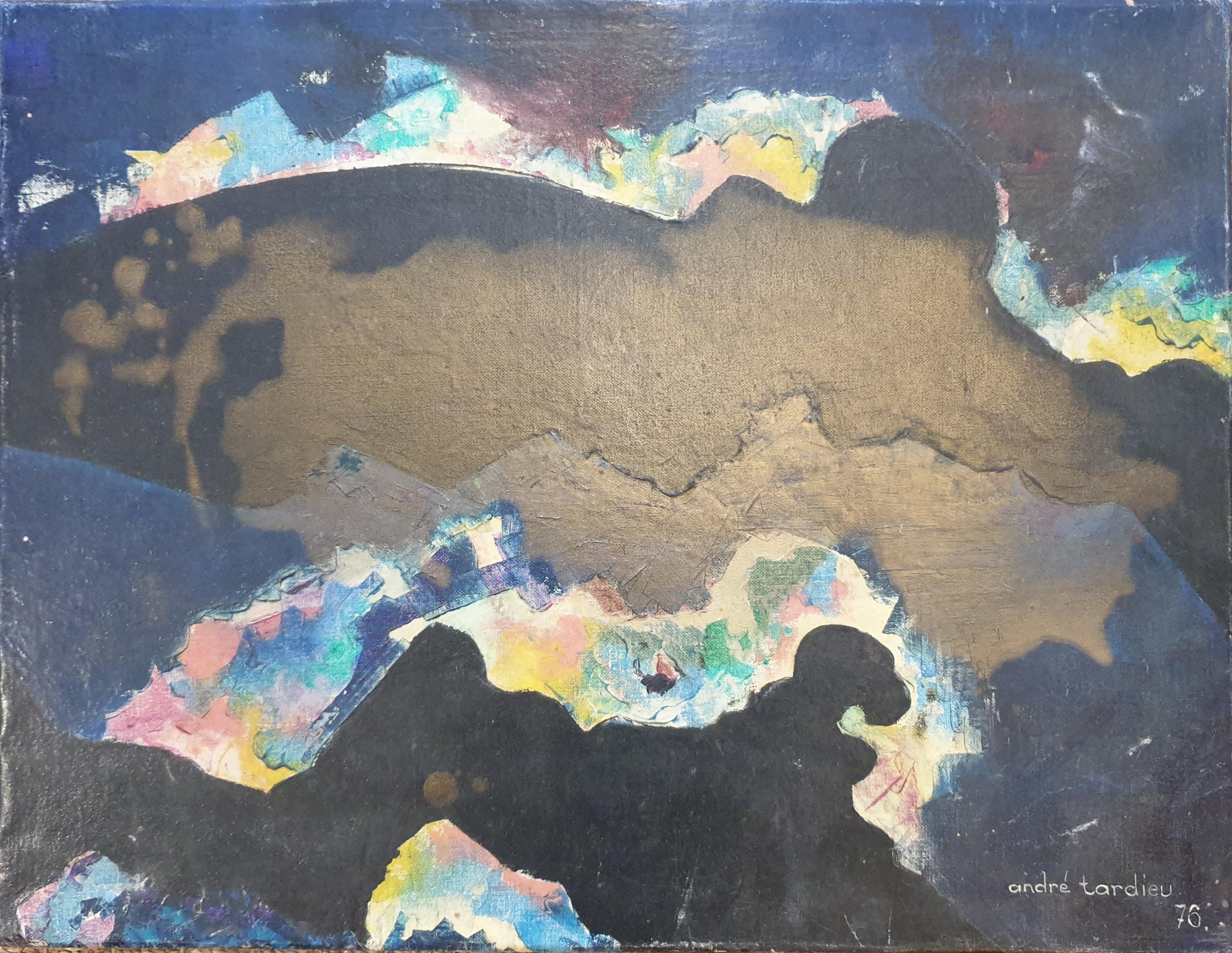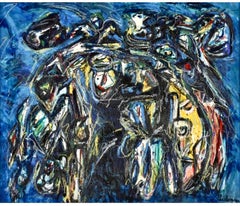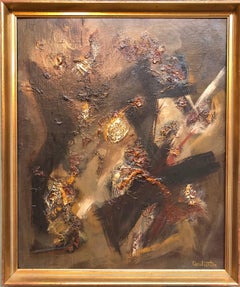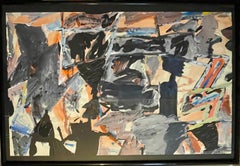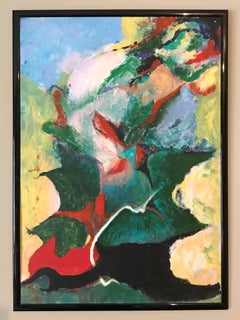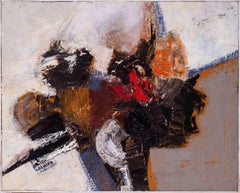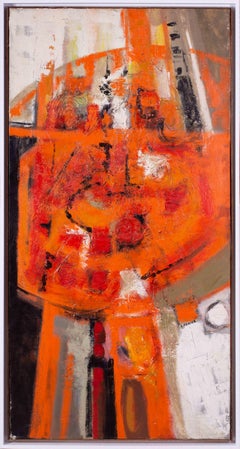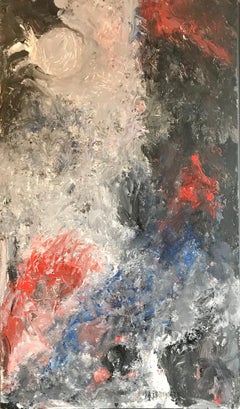Items Similar to Large Polish French Abstract Expressionist Oil Painting Willy Mucha, Ecole Paris
Want more images or videos?
Request additional images or videos from the seller
1 of 18
Willy MuchaLarge Polish French Abstract Expressionist Oil Painting Willy Mucha, Ecole Paris1963
1963
$3,800
£2,946.41
€3,341.65
CA$5,447.14
A$5,923.88
CHF 3,120.84
MX$71,946.70
NOK 39,235.20
SEK 36,779.83
DKK 25,088.19
About the Item
French Large Abstract Expressionist Oil on Canvas Painting by Willy Mucha 1963
Frame: 39.5 X 52.5
Image: 38 X 51
Willy Mucha (1905 - 1995) was active/lived in France. Willy Mucha is known for vintage travel posters and abstract painting.
Willy Mucha (French 1905-1995)
The Polish born painter Willy Mucha was born in Warsaw, Poland in 1905; his precise biography remains unclear and he himself left doubt as to a possible relationship with Alfons Mucha, his Czech namesake. Willy Mucha began his studies of drawing and music in Poland and continued them in Austria Bohemia, then in Russia and Germany. After the death of his father in the early 1920s, he abruptly left his family and Poland. He undertook trips all over Europe (he was a pupil of the Polish painter and engraver Ladislas Skoczylas), then settled in France, which all artists dreamed of at the time; after enrolling at the University of Caen, he moved to the capital, where he joined the ranks of the Ecole de Paris.
Olivier Debre, Robert Combas, Sonia Lewitska, Zygmunt Schreter, Joachim Weingart, Isaac Antcher, Isaac Dobrinsky, Benn (Bension Rabinowicz), Lebadang, Maurice Blond, Jacques Chapiro, Alain Bonnefoit, Frederic Menguy, Jean Baptiste Valadie, Serge Mendjisky. Mobilized in tanks in 1939, Willy Mucha suffered the debacle and settled in Collioure, which he discovered in 1936 "on the road to the Spanish War". With the Torcatis group, he encouraged the passage of anti fascists through the Col de Banyuls. In 1943, threatened with denunciation, he was sent to the maquis in Aveyron. After the liberation, he returned to Collioure. Mucha kept his Parisian atelier in Montparnasse. His exhibitions take him all over the world. His greatest successes were in the United States, the "new homeland of painting" where many of his friends urge him to settle. He claims this wandering as well as the nomadism of his life and his style. Dismissing the figurative abstract quarrel, Willy Mucha made the Jean Bazaine formula his own: "The destiny of the world is not played out between the figurative and the non-figurative, but between the incarnate and the non-incarnate, which is quite different."
In Paris, but also in Collioure, the artist frequented the surrealist artists Raoul Dufy, Dorothea Tanning and Max Ernst, Roberto Matta, Camille Bryen, André Masson, Edouard Pignon, Marcel Duchamp, Man Ray, Serge Poliakoff and most of the important painters of his time. He is thought to be worldly, yet he is solitary and contemplative. He was influenced by Surrealism and Expressionism and his work is similar to Enrico Donati. Mucha will remain unfailingly linked to his elective land of Collioure, whose landscape he admired but, beyond the image, the light and the infinite horizon that will never cease to nourish his work. His career was marked by numerous exhibitions, both collective (Salon de Mai, Salon des comparaisons, Salon des Artistes indépendants, Sao Paulo, Art Gallery of Toronto, Royal Academy of London, Nantes, Tokyo, etc.) and personal. In addition to his line drawing, his painted work is truly a hymn to light and colour, inspired by the reality of places which he transfigures into almost abstract dazzle where the theme of the sphere (rising or setting sun) is recurrent."
He was included in the 1957 show Travel Posters at the Museum of Modern Art in NYC. (MoMA) along with Ruodi Barth, Jean Carlu, A. M.
Cassandre, Marc Chagall, Jules Chéret, Paul Colin, Hans Erni, Abram Games, Augusto Giacometti, George Him, Jan Lenica, Jan Lewitt, Herbert Matter, Pablo Picasso, Raymond Savignac.
- Creator:Willy Mucha (1905 - 1995, French)
- Creation Year:1963
- Dimensions:Height: 39.5 in (100.33 cm)Width: 52.5 in (133.35 cm)
- Medium:
- Movement & Style:
- Period:
- Condition:please refer to photos.
- Gallery Location:Surfside, FL
- Reference Number:1stDibs: LU38214699112
About the Seller
4.9
Platinum Seller
Premium sellers with a 4.7+ rating and 24-hour response times
Established in 1995
1stDibs seller since 2014
1,824 sales on 1stDibs
Typical response time: 1 hour
- ShippingRetrieving quote...Shipping from: Surfside, FL
- Return Policy
Authenticity Guarantee
In the unlikely event there’s an issue with an item’s authenticity, contact us within 1 year for a full refund. DetailsMoney-Back Guarantee
If your item is not as described, is damaged in transit, or does not arrive, contact us within 7 days for a full refund. Details24-Hour Cancellation
You have a 24-hour grace period in which to reconsider your purchase, with no questions asked.Vetted Professional Sellers
Our world-class sellers must adhere to strict standards for service and quality, maintaining the integrity of our listings.Price-Match Guarantee
If you find that a seller listed the same item for a lower price elsewhere, we’ll match it.Trusted Global Delivery
Our best-in-class carrier network provides specialized shipping options worldwide, including custom delivery.More From This Seller
View AllLarge Abstract Expressionist Oil Painting on Canvas John Von Wicht WPA Artist
Located in Surfside, FL
John von Wicht (German American, 1888-1970)
"On Blue"
1964
Oil and acrylic on canvas
Hand signed lower right "V. Wicht",
Hand signed, titled, and dated on the stretcher "1964-66"
D...
Category
1960s Abstract Expressionist Abstract Paintings
Materials
Oil, Canvas, Acrylic
Large German Neo Figuarist Abstract Expressionist Oil Painting Werner Liebmann
Located in Surfside, FL
WERNER LIEBMANN (German b. 1951)
"Elf Köpfe Bei Nacht,"
Oil on canvas, signed L/R, "Liebmann;"
29 1/4'' x 35 1/2'', framed 31'' x 37''.
Werner Liebmann (born 1951) is a German p...
Category
Late 20th Century Neo-Expressionist Abstract Paintings
Materials
Canvas, Oil
French Gestural Abstract Expressionist Textured Oil Painting
By Rene Couturier
Located in Surfside, FL
Rene Couturier lives in the Netherlands and France. Rene Couturier is known for abstract still life, figure and landscape painting.
Rene' Couturier is an artist whose works displays...
Category
1970s Abstract Expressionist Abstract Paintings
Materials
Canvas, Oil
Large Harry Bertschmann Swiss American Abstract Expressionist Outsider Painting
By Harry Bertschmann
Located in Surfside, FL
Harry Bertschmann (Swiss American, born 1931).
Acrylic painting on paper.
Artist signature to lower right.
Provenance: Joy Moos Gallery (this was exhibited at the Outsider Art Fair)
...
Category
20th Century Abstract Expressionist Abstract Paintings
Materials
Paper, Acrylic
Large Abstract Biomorphic Spanish Bold Modern Oil Painting Angel Ponce de Leon
Located in Surfside, FL
Abstracto Rojo (Red Abstract)
Hand signed and dated 1966
Angel Ponce de León (Spanish-French, 1925-)
The artist, apparently still living in his ...
Category
1960s Abstract Abstract Paintings
Materials
Canvas, Oil
1974 California Bay Area Abstract Expressionist Bold Oil Painting Don Clausen
By Don Clausen
Located in Surfside, FL
Don Clausen American (b. 1930)
Untitled (1974)
Oil on board
Hand signed lower left and verso
Framed 11.25 X 13.5 sight 9 x 11.25 inches
Don Clausen is an American Postwar & Contem...
Category
1970s Abstract Expressionist Abstract Paintings
Materials
Oil, Board
You May Also Like
Large French Expressionist Abstract Oil Painting
By Armand Rottenberg
Located in Cirencester, Gloucestershire
Expressionist Composition
by Armand Rottenberg (French 1903-2000)
oil painting on board, framed
Provenance: the artists estate
Framed 37 x 28 inches
Stunning original Cubist painti...
Category
Late 20th Century Abstract Expressionist Abstract Paintings
Materials
Oil
Mid Century French abstract oil on canvas by Jean Maurice Lasnier
Located in Petworth, West Sussex
Jean Maurice Lasnier (French, 1922 – 2006)
Tempete Industrielle
Signed ‘LASNIER’ (lower left)
Oil on canvas
25.3/4 x 32 in. (65.4 x 81cm.)
Provena...
Category
20th Century Abstract Expressionist Abstract Paintings
Materials
Canvas, Oil
A large French abstract oil painting by Jean Maurice Lasnier
Located in Petworth, West Sussex
Jean Maurice Lasnier (French, 1922 – 2006)
TROPIQUES, 1972
Signed ‘LASNIER’ (lower right), dated ‘5-72’ (on the reverse)
Oil on canvas
54.3/4 x 27...
Category
20th Century Abstract Abstract Paintings
Materials
Canvas, Oil
Large French Expressionist Abstract Oil Painting
By Armand Rottenberg
Located in Cirencester, Gloucestershire
Expressionist Composition
by Armand Rottenberg (French 1903-2000)
signed lower corner, dated 1990
oil painting on board, framed
Framed 28.5 x 17.5 inches
Stunning original abstract...
Category
Late 20th Century Abstract Expressionist Abstract Paintings
Materials
Oil
Mid-century Abstract Expressionist Oil on Canvas.
Located in Cotignac, FR
Mid-century abstract expressionist oil on canvas by French artist, André Tardieu, signed and dated 1976 bottom right. Also with signature, ...
Category
Mid-20th Century Abstract Expressionist Abstract Paintings
Materials
Canvas, Oil
Large Multi Coloured French Expressionist Abstract Oil Painting
By Armand Rottenberg
Located in Cirencester, Gloucestershire
Large Multi Coloured French Expressionist Abstract Oil Painting
by Armand Rottenberg (French 1903-2000)
oil painting on board, framed
Framed 37.5 x 27 inches
Stunning original abs...
Category
Late 20th Century Abstract Expressionist Abstract Paintings
Materials
Oil
